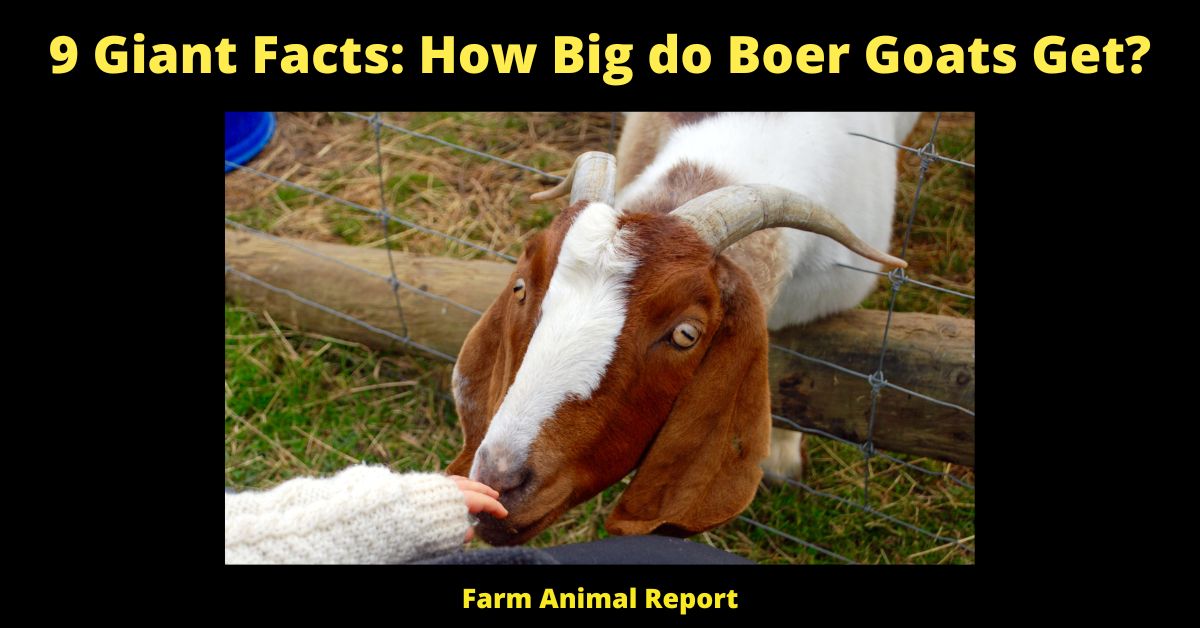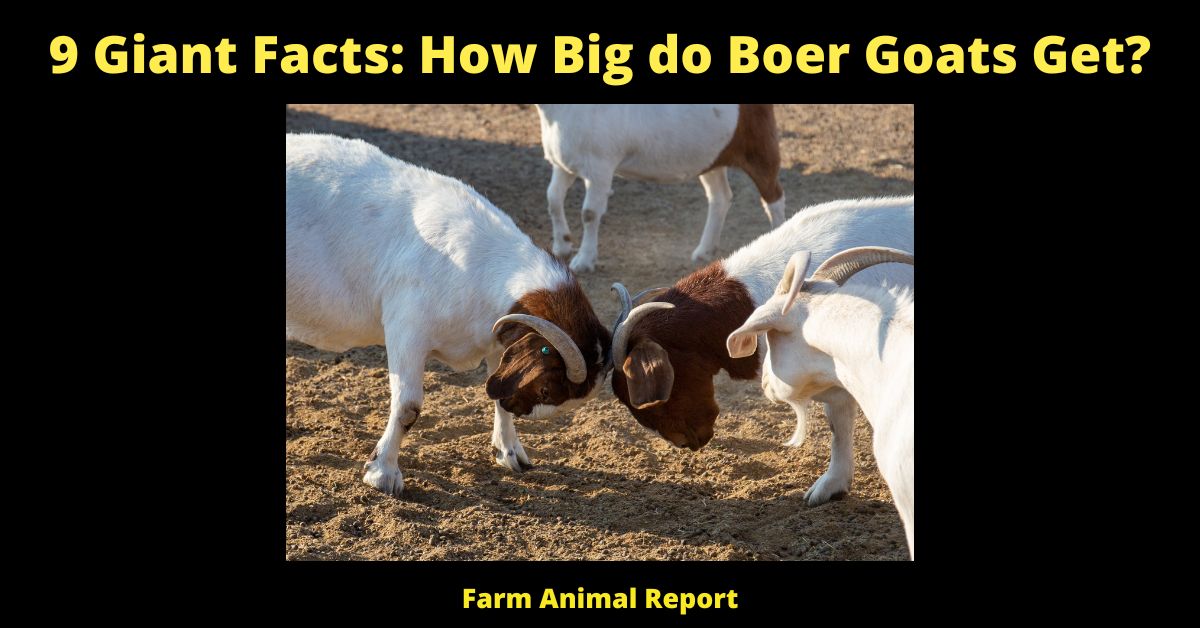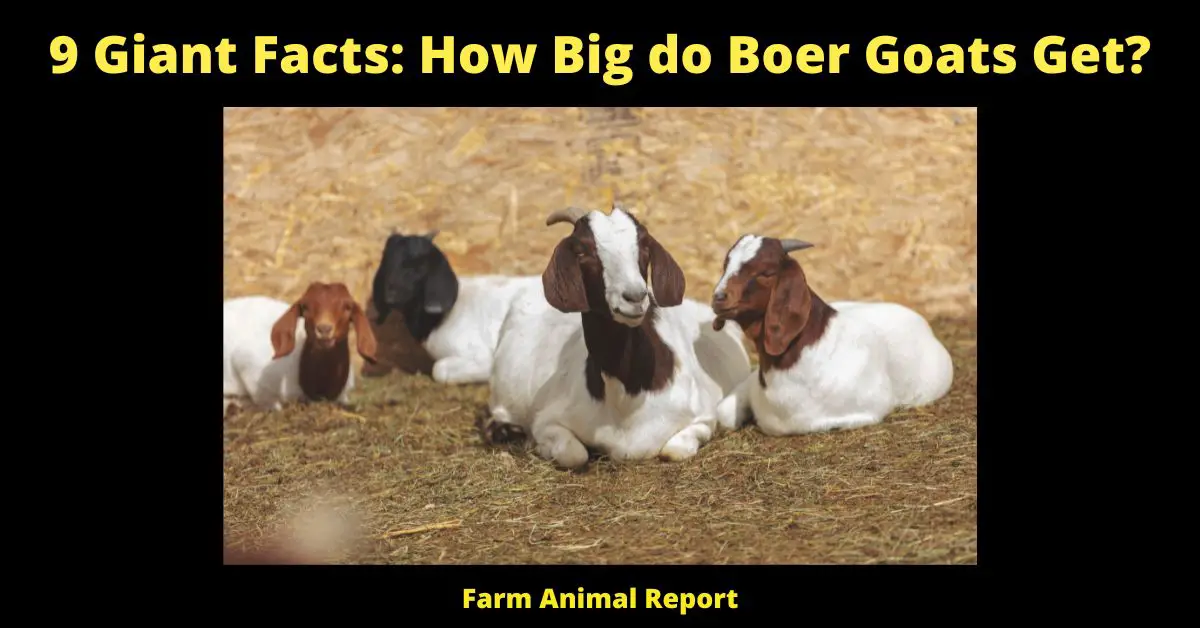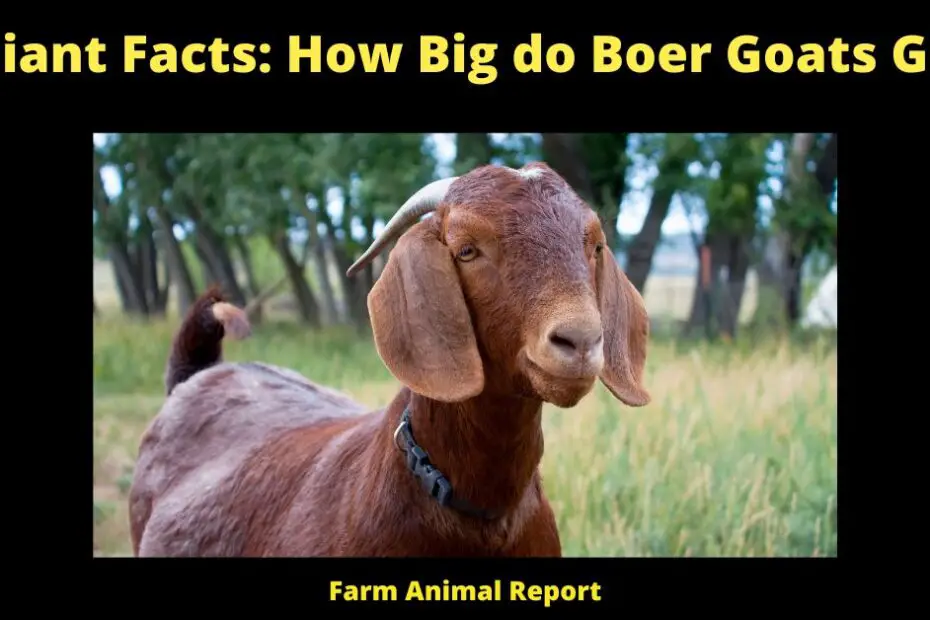How Big do Boer Goats Get? Boer, a South African goat breed, is the world’s most productive meat goat. In addition to southern Africa, millions of Boer goats are raised in Australia and New Zealand, the United States and Canada, the United Kingdom, and other countries.
They are valued for their size, rapid weight gain, carcass quality, hardiness, and submissiveness. These characteristics can be transmitted when Boer bucks are bred to Doe’s of other breeds. Boer does notoriously for giving birth to twins and sometimes triplets as frequently as twice every three years. How Big do Boer Goats Get?
See Amazons Resources on the Science of Raising Goats
Afrikaner farmers produced Boer (Dutch for “farmer”) goats by crossing several European and Indian breeds with varieties maintained by Bantu and Khoekhoe tribes. Breeders in what is now the province of Eastern Cape created the South African Boer Goat Breeders Association in 1959, (the early 1900s). This organization has developed the criteria that are followed by breeders worldwide.
The most valuable Boer goats have a white body, redhead, brown eyes, lop (downward-hanging) ears, backward-curving horns, and powerful, well-positioned legs. Males typically reach 160 kg (350 pounds) as adults, while females can weigh up to 110 kg (230 pounds) (about 250 pounds).
Let’s compare the Boer does and bucks and the Boers to other species. They are one of the largest Goat Breed, they are bigger goats and are a popular choice breeds of goats. They are great Dairy goats with long legs and distinctive brown heads.
How Big do Boer Goats Get?
How big do female Boer goats get?
Upon reaching full maturity, a Boer doe typically weighs between 190 and 230 pounds on average. This may appear to be a huge range, but it is far smaller than the range for Boer bucks.
How big do male Boer goats get?
Boer bucks are a formidable force, dubbed “gentle giants.” They are in high demand breed of goat, pendulous ears, white bodies, and have high fertility rates. Boer bucks can range between 200 and 320 pounds on average and can weigh up to 340 pounds in exceptional instances.
It is hardly unexpected that farmers have selected this breed for its meat for decades. The second noteworthy characteristic ( Breed Standards) of Boer goats is that the bucks develop significantly quicker than they do. Due to this, bucks are overwhelmingly favored in cattle herds. They grow so rapidly that they are quite lucrative for a farm.

How tall do Boer goats get?
There is less variation between the heights of bucks and does, with both averaging between 20 and 25 inches (at the shoulder). This average is inclusive of both does and bucks. Some exceptionally tall individuals have been recorded to reach 30 inches in height, although this is not the norm.
How long does a Boer goat take to reach maturity?
Boer goats often require a couple of years to attain maturity. They will develop quickly at an early age, then grow more slowly beyond a certain age, yet they will become quite large very quickly. Both do, and bucks will attain sexual maturity in approximately five months.
Boer goats typically live between 8 and 12 years and attain maturity between the ages of two and three. Does and bucks often reach adulthood at the same time, although bucks acquire weight and bulk far more rapidly than does.
How much larger are Boer goats than Alpine goats?
Alpine goats are another common type of domestic goat, and comparing them to Boer goats can give you a sense of how enormous Boers are. Alpine goats are considerably more slender and weigh considerably less than Boer goats, although being slightly taller on average than Boer goats.
At maturity, Alpine weighs approximately 135 pounds and stands 30 inches tall at the shoulder. Before goats were kept as pets and friends, height was not a major consideration in breeding. They would have been selectively selected for meat and milk, which most Boer goats are superior at producing. Alpine goats are not little and are magnificent animals, but the Boer goat is nearly unrivaled in terms of weight.
How much larger are Boer goats than Anglo-Nubian goats?
Boer goats may be among the heaviest, while Anglo-Nubian goats are among the tallest. The typical height of Anglo-Nubian goats is up to 35 inches, making them impressively tall creatures. Similar to Boer goats, Anglo-Nubian bucks are prized by farmers due to their rapid growth. However, they cannot equal the weight of Boer goats. Even a mature buck typically weighs no more than 175 pounds, whereas the maximum weight of a Boer is over 340 pounds.
In certain respects, the terrain has contributed to the evolution and differentiation of these goats. The Alpine goats would need to be more slim and agile to traverse the terrain. Boer goats roaming grasslands are not concerned with their weight. Therefore, Boer goats are the Goliaths of domestic goats. Increasing Milk Production and goat meat because of the fast growth rate.
They are larger than any other domestic breed and can weigh up to 340 pounds as adults. When compared to other prominent domestic goat breeds, it is evident that they are among the largest. If you’re considering raising Boer goats in your home, ensure that you have plenty of areas, as they require a great deal!

The Boer Goat is a Hardy Breed.
The popularity of the Boer goat breed in the United States is largely due to its resilience. Boer goats can tolerate various temperatures (cold, hot, humid, and dry) and other environmental factors. They may reproduce in severe environments. Without a breeding season, Boer goats can breed year-round (in other words, they are polyestrous).
In addition to being able to survive a variety of weather conditions, Boer goats are resistant to disease. Boers may withstand certain diseases that other goat breeds cannot. According to a study published by Malan and Erasmus (2000), the following diseases are lethal to other goat breeds but not to Boer goats:
• Bluetongue,
• Prussic acid intoxication and
• Enterotoxaemia (to a lesser extent)
Boer goats demand minimum upkeep. They are a resilient breed. This does not imply that they are unfriendly. Quite the contrary. They may not be delicate, but they like human company when properly socialized.
Boer goats outside the United States (particularly in Africa) are harder than their American counterparts. To increase the Boer Goat population in the late 1990s, weaker goats (who should have been killed) were bred with others. Numerous Boer goats in the United States are kept as pets, so they have evolved to live in a comfortable setting.
Boer goats raised primarily for meat production in other places are more resistant to stress (high temperatures, lack of additional feed, etc.). However, the Boer goat breed is more resilient than other varieties in the United States.
The Longevity of Boer Goats
If Boer goats are not raised for their meat, old age is the leading cause of death. Deer can leave for up to 8 to 12 years. Can live 12 to 20 years.
How to Feed and Care for Your Boer Goats
Boer goats enjoy browsing and eating whatever weeds they can find. A challenge with feeding Boer goats is that not all of the vegetation they consume (while browsing) are available year-round. Some plants do not grow during the winter months.
Unless it is winter or you live in a region with scarce pastures, you do not need to worry about giving your Boer goats daily additional feed. Providing protein-rich grains to Boer goats is of little importance. As ruminant animals, Boer goats can convert the plant matter they consume into the necessary nutrients.
If you are raising Show Boer goats, you can provide them with grains as an additional protein source for muscle growth. Additionally, pregnant goats should be provided with grains.
Giving Food to Orphaned Boer Goat Kids
Young goats do not need to be fed if they are with their mother. For 12 weeks, ( 3 months of age) you should bottle-feed orphaned Boer goat youngsters (3 months). It would help if you began weaning Boer goat youngsters from their mother’s milk at eight weeks.

Care and feeding of Adult Boer Goats
Permit your Boer goats to browse and forage for weeds and grass. If there is little or no grass, you must give goats food. Do not overfeed your goats, as this might result in gas (an expanded stomach) or obesity.
As a general rule for ruminant animals, you should not frequently alter your goats’ diet. It takes time for the microorganisms in your goats’ digestive tracts that aid digestion to acclimate to a new feed. If you wish to switch the feed for your goats, mix the old and new feeds for a week before switching to the new feed alone.
The feeding and watering troughs for Boer goats should be elevated so that the goats do not contaminate their food. To maintain your goats’ health, feed them dry grass, as hazardous germs can only thrive on a moist surface. Their feeding bowls can be supplemented with medicinal aids. Add vitamins only when instructed by your veterinarian. You can provide delectable snacks for your Boer goats. Consider offering them their favorite, nutrient-rich fruits.
Final Thoughts – How Big do Boer Goats Get?
Hopefully, this article on how big Boer goats get has helped you better understand the size of these animals and given you a little more information about their needs. It is important to remember that all goats are different, and there is no one size fits all when it comes to owning a goat!






